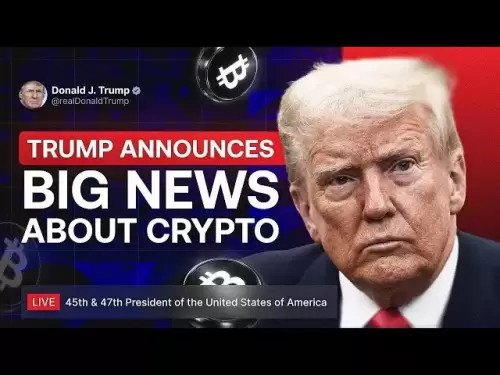-
 Bitcoin
Bitcoin $114200
0.00% -
 Ethereum
Ethereum $3637
0.56% -
 XRP
XRP $2.950
-2.01% -
 Tether USDt
Tether USDt $0.9999
0.02% -
 BNB
BNB $761.0
0.55% -
 Solana
Solana $164.1
-1.38% -
 USDC
USDC $0.9999
0.02% -
 TRON
TRON $0.3332
0.36% -
 Dogecoin
Dogecoin $0.2012
-0.52% -
 Cardano
Cardano $0.7261
-1.41% -
 Hyperliquid
Hyperliquid $37.62
-2.13% -
 Stellar
Stellar $0.3930
-2.65% -
 Sui
Sui $3.441
-0.16% -
 Bitcoin Cash
Bitcoin Cash $563.8
0.70% -
 Chainlink
Chainlink $16.50
0.09% -
 Hedera
Hedera $0.2424
-0.14% -
 Ethena USDe
Ethena USDe $1.001
0.01% -
 Avalanche
Avalanche $22.20
0.00% -
 Litecoin
Litecoin $118.0
-2.48% -
 UNUS SED LEO
UNUS SED LEO $8.991
0.12% -
 Toncoin
Toncoin $3.195
-3.87% -
 Shiba Inu
Shiba Inu $0.00001217
0.12% -
 Uniswap
Uniswap $9.674
-0.21% -
 Polkadot
Polkadot $3.633
1.00% -
 Monero
Monero $295.3
-0.82% -
 Dai
Dai $0.9999
0.00% -
 Bitget Token
Bitget Token $4.321
-0.41% -
 Cronos
Cronos $0.1392
0.73% -
 Pepe
Pepe $0.00001027
-0.89% -
 Aave
Aave $258.5
0.32%
What does DeFi mean in the cryptocurrency circle?
Decentralized Finance (DeFi) empowers individuals with accessible, low-fee, and transparent financial services, fostering innovation through its decentralized blockchain-based ecosystem.
Oct 03, 2024 at 05:48 am
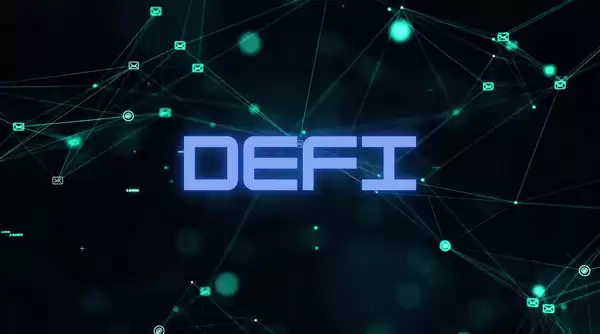
1. Understanding DeFi
Decentralized Finance (DeFi) refers to financial applications and services built on decentralized blockchain networks, liberating them from the control of traditional centralized intermediaries like banks.
2. Core Principles of DeFi
- Decentralization: DeFi removes intermediaries, allowing peer-to-peer financial transactions without central authorities.
- Transparency: Blockchain technology records all transactions publicly, ensuring transparency and accountability.
- Open source: DeFi applications are typically open source, allowing for public review and contribution.
3. Key Components of DeFi
- Decentralized Exchanges (DEXs): Allow trading of cryptocurrencies without the need for centralized exchanges.
- Lending and Borrowing Protocols: Provide platforms for users to lend or borrow cryptocurrencies, earning interest or paying it.
- Stablecoins: Cryptocurrencies tied to the value of fiat currencies, providing stability in the highly volatile crypto market.
- Yield Farming: Lending crypto assets to generate rewards or returns.
4. Benefits of DeFi
- Accessibility: DeFi services are accessible to anyone with an internet connection, without geographical restrictions or credit checks.
- Lower Fees: DeFi applications often have significantly lower transaction fees than traditional financial institutions.
- Transparency and Security: Blockchain technology safeguards transactions, reducing fraud and improving confidence.
- Innovation: DeFi fosters innovation by allowing developers to create new financial products and services.
5. Challenges of DeFi
- Volatility: Cryptocurrencies are notoriously volatile, which can pose risks to DeFi users.
- Scalability: Some DeFi platforms face scalability issues, limiting transaction speeds and increasing fees.
- Regulation: The regulatory landscape for DeFi is still evolving, creating uncertainties for users and businesses.
6. Risks of DeFi
- Smart Contract Risks: Bugs or vulnerabilities in smart contracts that power DeFi applications can lead to financial losses.
- Cybersecurity Threats: DeFi platforms can be susceptible to hacks and other cybersecurity attacks.
- Financial Losses: Investments in DeFi products can fluctuate in value, potentially leading to financial losses.
Conclusion
DeFi represents a transformative force in the financial landscape, offering a decentralized and innovative alternative to traditional financial systems. While it poses challenges like volatility and regulation, the potential benefits of accessibility, transparency, and lower fees make it an exciting frontier for financial innovation. As the DeFi industry matures, we can expect further advancements and wider adoption, revolutionizing the way we interact with financial services.
Disclaimer:info@kdj.com
The information provided is not trading advice. kdj.com does not assume any responsibility for any investments made based on the information provided in this article. Cryptocurrencies are highly volatile and it is highly recommended that you invest with caution after thorough research!
If you believe that the content used on this website infringes your copyright, please contact us immediately (info@kdj.com) and we will delete it promptly.
- Fast-Moving Cryptos: Could Pudgy Penguins Deliver High Gains by 2025?
- 2025-08-06 16:30:11
- Crypto Gaming Tokens: August 2025 Investment Opportunities
- 2025-08-06 16:50:12
- Flipster, Kaia, and Stablecoin Access: Bridging Crypto to Everyday Life in Asia
- 2025-08-06 16:50:12
- Superp ($SUP) Takes Flight on Binance Alpha: A New Era for On-Chain Perpetual Trading
- 2025-08-06 16:30:11
- Nissan Magnite Kuro: India's Black Edition Steals the Show
- 2025-08-06 16:56:02
- MYX Token's Crypto Shift: A Potential Trap for the Unwary?
- 2025-08-06 16:56:02
Related knowledge
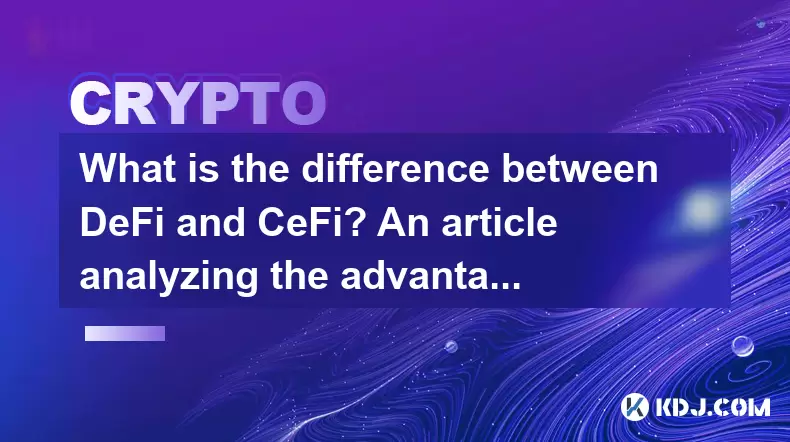
What is the difference between DeFi and CeFi? An article analyzing the advantages and disadvantages of both
Jun 13,2025 at 03:57am
Understanding the Foundations of DeFi and CeFiTo fully grasp the difference between DeFi (Decentralized Finance) and CeFi (Centralized Finance), it’s ...
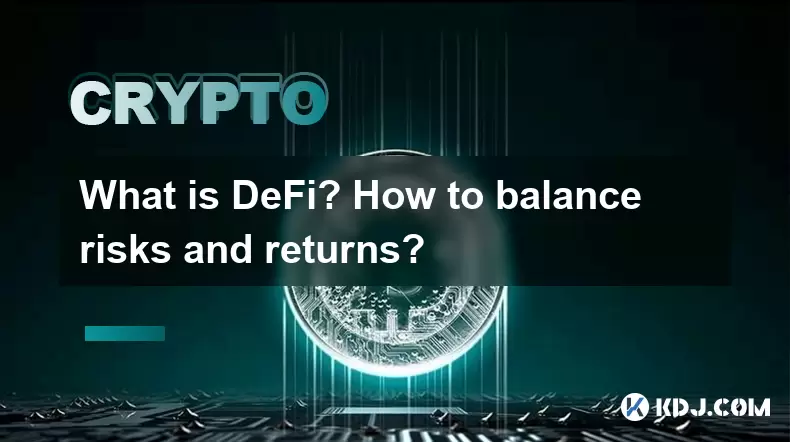
What is DeFi? How to balance risks and returns?
May 31,2025 at 12:22pm
What is DeFi? How to Balance Risks and Returns? Decentralized Finance, commonly known as DeFi, represents a revolutionary shift in the financial ecosy...
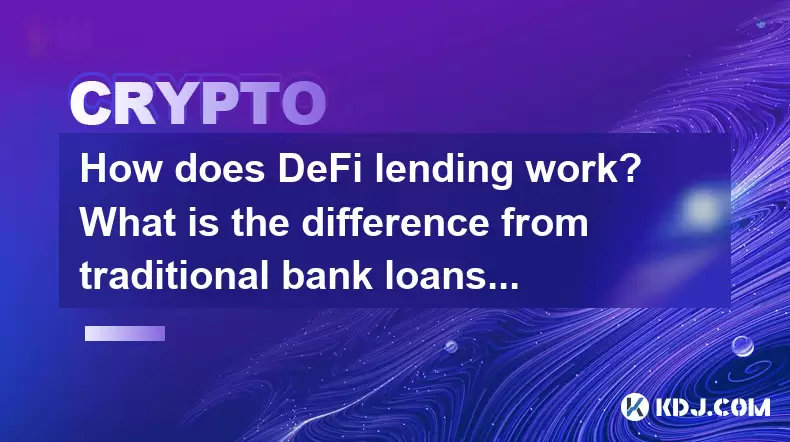
How does DeFi lending work? What is the difference from traditional bank loans?
May 29,2025 at 05:36pm
Introduction to DeFi LendingDeFi lending, or decentralized finance lending, represents a revolutionary shift in the way borrowing and lending are cond...
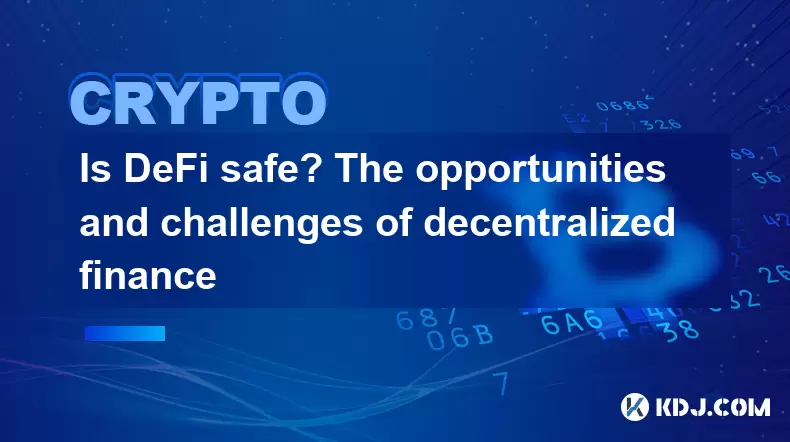
Is DeFi safe? The opportunities and challenges of decentralized finance
May 27,2025 at 02:28pm
Decentralized Finance, commonly known as DeFi, has revolutionized the financial landscape by offering a range of financial services without the need f...
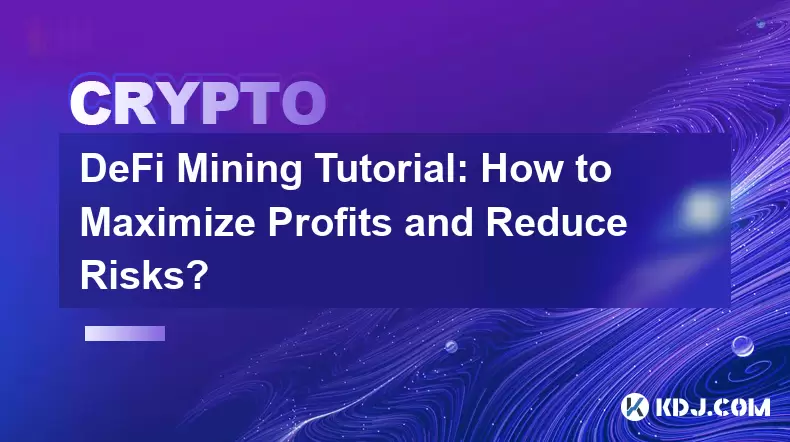
DeFi Mining Tutorial: How to Maximize Profits and Reduce Risks?
May 27,2025 at 07:42am
DeFi, or Decentralized Finance, has opened up a new world of opportunities for crypto enthusiasts looking to maximize their profits through various mi...
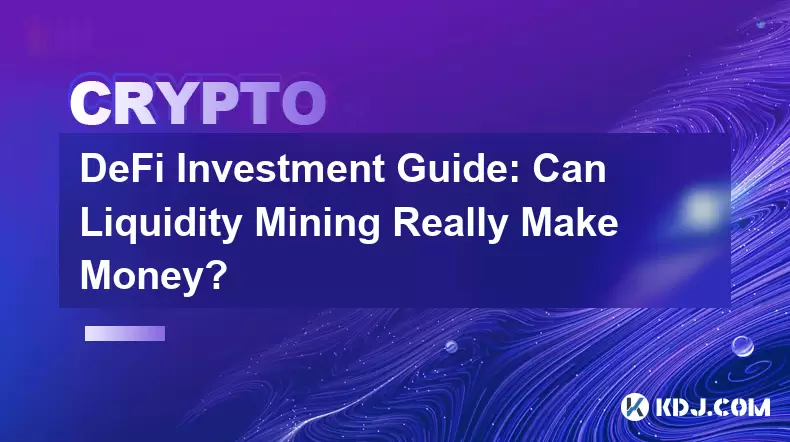
DeFi Investment Guide: Can Liquidity Mining Really Make Money?
May 28,2025 at 10:18am
Introduction to Liquidity Mining in DeFiLiquidity mining has emerged as a popular method for earning passive income within the decentralized finance (...

What is the difference between DeFi and CeFi? An article analyzing the advantages and disadvantages of both
Jun 13,2025 at 03:57am
Understanding the Foundations of DeFi and CeFiTo fully grasp the difference between DeFi (Decentralized Finance) and CeFi (Centralized Finance), it’s ...

What is DeFi? How to balance risks and returns?
May 31,2025 at 12:22pm
What is DeFi? How to Balance Risks and Returns? Decentralized Finance, commonly known as DeFi, represents a revolutionary shift in the financial ecosy...

How does DeFi lending work? What is the difference from traditional bank loans?
May 29,2025 at 05:36pm
Introduction to DeFi LendingDeFi lending, or decentralized finance lending, represents a revolutionary shift in the way borrowing and lending are cond...

Is DeFi safe? The opportunities and challenges of decentralized finance
May 27,2025 at 02:28pm
Decentralized Finance, commonly known as DeFi, has revolutionized the financial landscape by offering a range of financial services without the need f...

DeFi Mining Tutorial: How to Maximize Profits and Reduce Risks?
May 27,2025 at 07:42am
DeFi, or Decentralized Finance, has opened up a new world of opportunities for crypto enthusiasts looking to maximize their profits through various mi...

DeFi Investment Guide: Can Liquidity Mining Really Make Money?
May 28,2025 at 10:18am
Introduction to Liquidity Mining in DeFiLiquidity mining has emerged as a popular method for earning passive income within the decentralized finance (...
See all articles

























